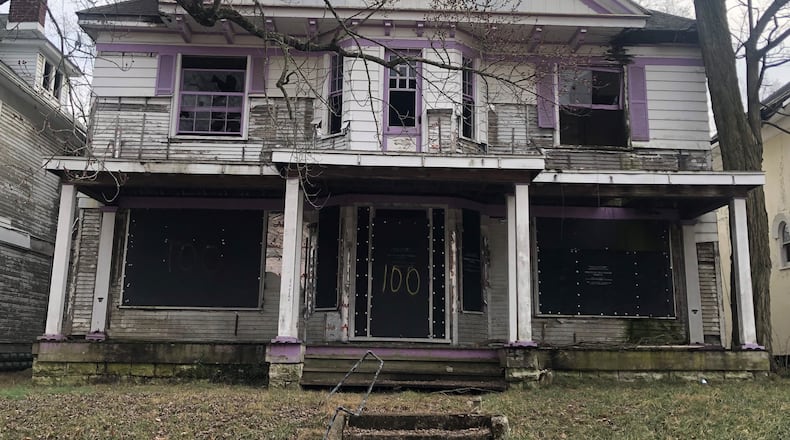“We hope that it will make a dramatic difference,” said Todd Kinskey, Dayton’s director of planning, neighborhoods and development.
The Dayton City Commission recently approved two contracts worth more than $820,000 to remove about 90 vacant and abandoned residential structures across the city.
Bladecutters Inc. won the contracts, which call for knocking down homes and apartment properties of three stories or less.
Nearly 80% of the funds will come from the federal Community Development Block Grant (CDBG) program, while the rest will be general fund money.
In recent years, Dayton generally has spent a couple million dollars annually removing blight, and the city completed 98 demolitions through the end of the third quarter of 2021, according to city documents.
Credit: Cornelius Frolik
Credit: Cornelius Frolik
But Dayton plans to pour about $15.8 million of its federal rescue funds into residential demolition, which officials say should allow the city to take down more than 850 residential properties.
Dayton has been allocated $138 million from the American Rescue Plan Act (ARPA).
Combined with CDBG and city funds, Dayton should be able to remove all of the roughly 1,025 structures on its nuisance list, city officials said.
City Manager Shelley Dickstein said that is a huge investment that will eliminate roughly one in six vacant structures in the city.
Large-scale demolition activities should improve neighborhoods and hopefully will support the rehab and reuse of many of the thousands of other vacant properties in the city, Dickstein said.
Many empty properties are in pretty good shape and have the potential to be salvaged and returned to productive use, she said.
Demolition will be strongly focused in target neighborhoods identified by the Dayton Recovery Plan. High-need areas include Wolf Creek, Miami Chapel, Edgemont and Carillon in west and southwest Dayton, as well as Old North Dayton and Five Oaks.
Other focus locations in the plan include Twin Towers and the Wright brothers’ airplane factory site.
“Typically, we focus on a worst-first approach, as well as along major thoroughfares and around key assets (schools, employers, parks, etc.),” Kinskey said. “With ARPA, we are working on a strategy that is comprehensive, to improve overall neighborhood conditions in the target areas.”
Kinskey said the city is readying its internal processes to administer federal rescue funds, and the city hopes to begin awarding funds by the end of the summer.
Rescue funds have to be fully allocated by the end of 2024, and projects must be completed by 2026, he said.
The city also will use some of its rescue dollars to stabilize key buildings, repair sidewalks, improve city parks and remove debris on overgrown lots, he said.
About $10 million is expected to go toward sidewalks and curbs, while $3.2 million will pay for upgrading parks and planting new tree lawns, which doesn’t include costs for new spray parks.
While a significant amount of the city’s recovery plan investment will be focused on high-need areas, demolition activities will benefit the entire city, Dickstein said.
City staff recently have been out in the community checking on properties to make sure they still belong on the nuisance list, Dickstein said.
“We know we’re not going to be able to take away all structures,” she said. “But we also, remember, as part of the recovery plan have a significant amount of funding going into housing rehab.”
.
About the Author




